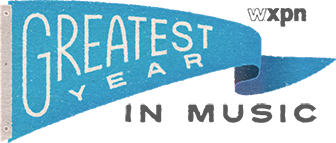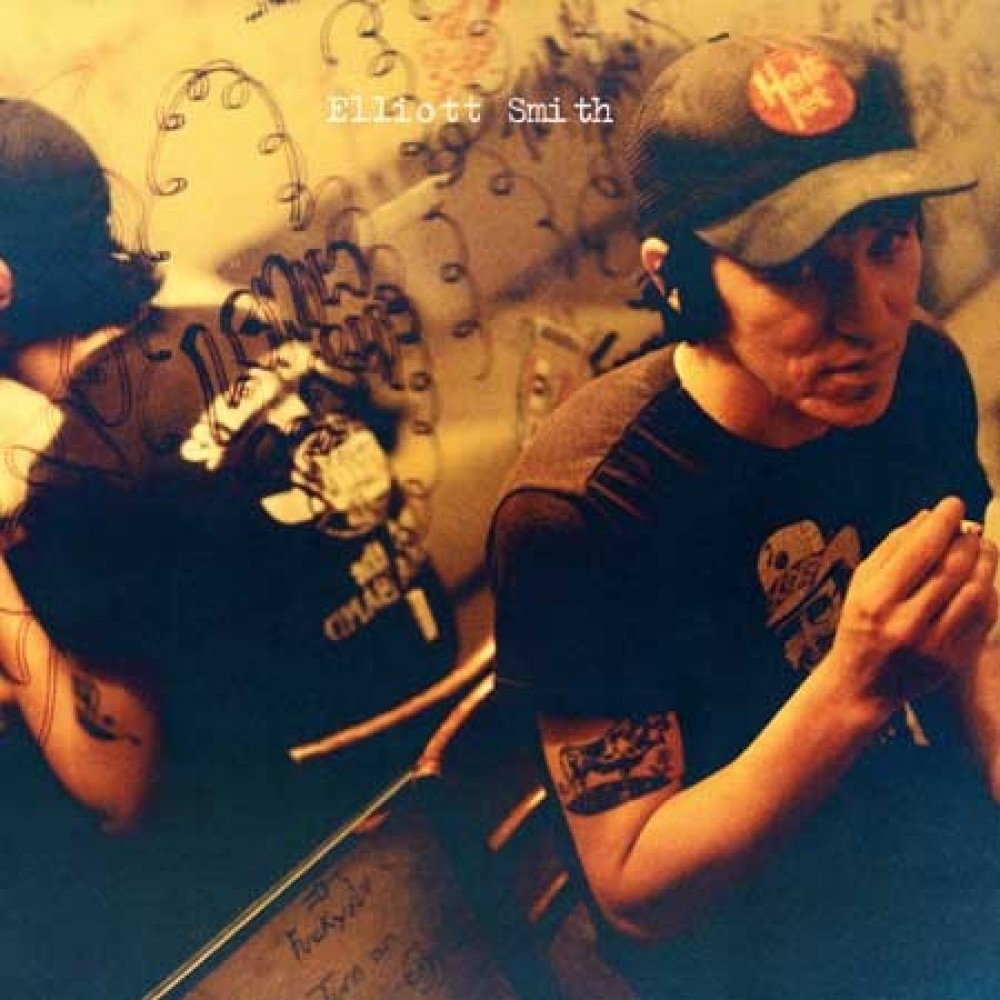Julian Booker continues Sleepy Hollow‘s profiles of potential Greatest Years in Music with a look at 1997.
Read his thoughts below:
For this week’s installment of Sleepy Hollow’s “Greatest Year” feature, we move twenty-four years ahead from our last post (1963) to focus on the year 1997. First things first… this is a year that was heavy on pop: Spice Girls’ “Wannabee,” Backstreet Boys’ “Quit Playing Games (With My Heart),” and Hanson’s “Mmmbop” were all in its top 15 singles of the year.
Hip Hop and R&B dominated the charts with huge hits from Puff Daddy & co. (“I’ll Be Missing You,” “Can’t Nobody Hold Me Down,” “Mo Money Mo Problems), Toni Braxton (“Un-Break My Heart”), R. Kelly (“I Believe I Can Fly”), Usher (You Make Me Wanna…”), and Blackstreet (“No Diggity” feat. Dr. Dre).
Modern Rock also hit its stride with radio staples from Meredith Brooks (“Bitch”), Third Eye Blind (“Semi-Charmed Life”), and The Verve Pipe (“The Freshman”), while a surprising group of singer-songwriters made their way up the charts in the form of Duncan Sheik’s “Barely Breathing,” Shawn Colvin’s “Sonny Came Home,” and Jewel’s massive hits “Foolish Games” and “You Were Meant for Me,” which would have finished in the year’s top spot if not for Sir Elton John’s “Something About the Way You Look Tonight” and “Candle in the Wind 1997.”
And while they may not have topped the charts, perhaps most importantly, 1997 featured a remarkable amount of excellent (and in many cases, career-defining) albums whose influence is still being felt today, including:
Radiohead – Ok Computer
Bjork – Homogenic
The Verve – Urban Hymns
Modest Mouse – The Lonesome Crowded West
Foo Fighters – The Colour and the Shape
Built to Spill – Perfect from Now On
Blur – Blur
Neko Case – The Virginian
Phish – Slip, Stitch & Pass
Erykah Badu – Baduism
Sleater-Kinney – Dig Me Out
Pavement – Brighten the Corners
Ween – The Mollusk
Ben Folds Five – Whatever & Ever Amen
Whiskeytown – Strangers Almanac
Yo La Tengo – I Can Hear the Heart Beating as One
Notorious B.I.G. – Life After Death
And because we probably won’t be getting to Biggie’s “Hynotize” any time soon on Sleepy Hollow, here are five selections from 1997 that we feel best represent the weekend morning listening experience. Enjoy!
Elliott Smith – Either/Or
By the time Either/Or came out in February of 1997, the Portland, OR-based Elliott Smith had been through a failed major label deal with Virgin & his band Heatmiser, and released two solo albums, 1994’s Roman Candle and 1995’s self-titled. Like its predecessor, Either/Or was released on large indie Kill Rock Stars, and though it didn’t even dent the charts, it did lead to Gus Van Sant including Smith’s music in his wildly successful film Good Will Hunting, ultimately resulting in Smith performing “Miss Misery” at the Oscar’s ceremony, landing him a record deal with Dreamworks, and thrusting him into a spotlight which he would only ever accept with increasing reluctance and skepticism before his death in 2003.
And while its follow-up, XO, would set Smith onto the Billboard Top 100 Albums chart with its ambitious use of mid-’60s psych-pop production techniques, Either/Or is the probably the best example of Smith’s two most important traits: unflinching vulnerability and his masterful and singular command of song composition. Tracks like “Alameda,” “Angeles,” and the equally beautiful and heart-wrenching “Between the Bars” set Smith apart from nearly any other songwriter of his generation, with Smith’s performances (he plays every instrument) and the White Album-style mixing and production provided by Rob Schnapf, Tom Rothrock, Joanna Bolme, and Smith himself giving the album the warmth and timelessness that makes Either/Or even more revered today than it was at the time of its release.
Buena Vista Social Club – Buena Vista Social Club
If you want a more complete idea of what the original intentions were behind Ry Cooder’s Buena Vista Social Club, you must look to the 2010 release Afrocubism, which paired kora player Toumani Diabate and a number of his Malian contemporaries with Social Club alumni including guitarist Eliades Ochoa. It was always Cooder’s intention to blend the music of Mali and Cuba, but when the west African participants were unable to attain the proper visas, Cooder was left with no choice but to focus solely on the Cuban folk that makes up Buena Vista Social Club.
And that may have been a stroke of luck, for as good as Afrocubism is, Cooder’s initial 1997 recordings were something of a phenomenon, a collection of songs played and musicians performing with such warmth and grace, that the album retains its status as one of the classic recordings of the last twenty years.
Celebrating the rich history of Cuban folk and the pre-revolutionary members club that shares its name, Buena Vista Social Club features compositions dating back to the ’20s and ’30s (“¿Y tu que has hecho?” and “Dos “gardenias”), the 1940s-era “mascot tune” that bears the album’s name, and the almost unparalleled album opener “Chan Chan,” written by Compay Segundo in the relatively recent late-1980s. The album would go on to sell over 1,000,000 copies, get nominated for multiple Grammy awards, and span a touring act that is only now showing sign of slowing.
Ultimately, it is Cooder’s will to get this music recorded and share it, for the first time, with a worldwide audience that makes Buena Vista Social Club‘s such a remarkable document, for without it, this wholly unique and beautiful music may have gone unheard by most of us forever.
Smog – Red Apple Falls
By 1997, Bill Callahan (at the time also known as “Smog”) had made a name for himself as lo-fi hero whose music reflected an aesthetic that was always more loner than lonesome. Its not that Callahan’s work is devoid of the melancholy tones that underly so much great popular music, but his songs have always been a little more complicated, more detached.
His first peak (he has since returned to form with three consecutive near masterpieces: 2009’s Sometime I Wish We Were an Eagle, 2011’s Apocalypse and 2013’s Dream River) came when he teamed up with Jim O’Rourke for 1997’s Red Apple Falls and 1999’s Knock Knock. And while the latter features a more fully produced approach, O’Rourke allows Callahan’s songs to shine on Red Apple Falls, rarely ever adding more than a trap kit, single horn, or pedal steel to Callahan’s signature guitar and vocals. Lyrically, Callahan reflects on daily life, finding remarkable importance in seemingly mundane objects on “The Morning Paper,” “Blood Red Bird,” and especially, “To Be of Use,” where he sings:
Most of my fantasies are of
making someone else come.
Most of my fantasies are of
to be of use—
to be of some hard,
simple
undeniable use.
Like a spindle.
Like a candle.
Like a horseshoe.
Like a corkscrew.
His matter-of-fact tone and ability to synthesize the complexities of the human experience into a few words allow him to be viewed, on this album at least, as a poet first and a musician second. And though few of his contemporaries have been able to match his power and subtlety, Callahan has always remained just beneath the public consciousness. Of course, for someone who states, “in the last town / you should have seen what I was / if I was a stranger / I was worse than a stranger / I was well known,” perhaps that’s for the best.
Ani DiFranco – Living in Clip
No other artist who came to prominence in the 1990s was as fiercely independent in every facet of his or her music as singer/songwriter Ani DiFranco. With a work ethic that led her to release ten albums all on her own Righteous Babe label between her 1990 self-titled debut and 1997’s Living in Clip (she released three albums in 1996 alone), DiFranco had built a fanbase that sent the latter all the way to #59 the Billboard Top 200.
But for as good and as important as DiFranco’s studio work had been, it was her relentless touring schedule that had provided the fuel for much of her success, and as a performer, DiFranco has always had a certain magic live that is not so much superior as it is separate from her recorded work. Not for brevity, this album, the first ever live recordings that DiFranco officially released, encapsulates two discs and over 120 minutes of music. Tastefully accompanied by Sara Lee on bass and Andy Stochansky on drums, DiFranco’s performances not only stress what a great and impassioned live act she had become, but, as made evident by the expansive nature of the set, allow her to showcase the breadth and growth of her songwriting up to that point. In a way, it was the end of the first era of her career, with 1998’s Little Plastic Castle being the first step on an approach that finds her experimenting with and re-inventing her music to great success, as made evident on last year’s excellent Allergic to Water.
Bob Dylan – Time Out of Mind
There are those out there who simply will never be able to accept Bob Dylan’s voice, especially as it has sounded in the latter portion of his career. But for those (and there are many) who can not only accept but appreciate the legendary songwriter’s gravely strain, Time Out of Mind marks the beginning of a renaissance that has seen Dylan release the classics Love and Theft, Modern Times, and this year’s Frank Sinatra-inspired, Shadows in the Night.
We must remember that Dylan-admirers had waded through his inconsistent (dare we say, downright bizarre) 1980s output and virtually nothing in the way of real new music in the 1990s. But with Time Out of Mind, Dylan, along with producer Daniel Lanois showcased eleven new songs that recall the quality and ambitiousness of his ’60s and ’70s masterpieces. And if Time Out of Mind is not as essential as say The Freewheelin’ Bob Dylan (which we featured last time around), it is a wildly important statement within the scope of his career as a whole: some 35 years after his debut, Dylan was still using his singular artistic voice to make important music, and that’s a lot more than most songwriters could ever claim, and he still is.

